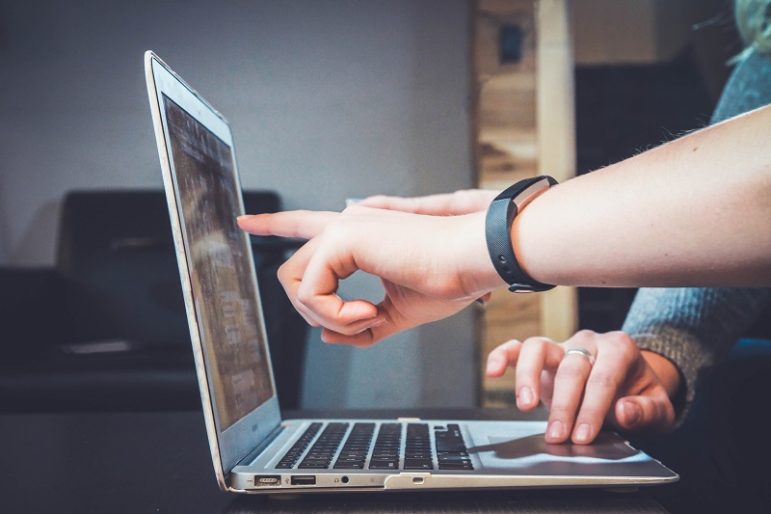

Open Source Investigations: How to Prevent, Address and Identify Vicarious Trauma
Read this article in
Whether it involves victims of a chemical attack or a bombing, open source investigators are required to watch and interact with raw footage from the field — it lies at the core of online open source investigation. As a consequence of the increase in eyewitness media, investigators come in contact with a high amount of graphic footage. While this is potential evidence for investigative and accountability purposes, we must be mindful of the effects that traumatic media can have on those coming in contact with it on a regular basis. The consequence of repeated exposure to eyewitness media or testimony is secondary, or vicarious, trauma. It is mental distress that is experienced as an outcome of interacting with graphic online media.
This guide is intended to serve as an educational tool for those working in the open source investigative field. It includes research of Sam Dubberley, manager at Amnesty International’s Digital Verification Corps and contributor to the EyeWitness Media Hub, as well as the author’s experience at the Open Source Investigations Lab in the Human Rights Center at UC Berkeley Law School. The guide focuses on themes from investigative work as related to the Middle East, but can be adapted to other geographic areas.
Preventing Secondary Trauma
Content from open source investigations in the Middle East is often very graphic in nature. Knowing how to prevent secondary trauma is the first step in slowing burnout caused by vicarious trauma in the human rights field.
One key feature of preventing secondary trauma is knowing yourself, and thus knowing what images affect you the most. For some people, the sound of crying children is particularly traumatic. For others, it is explicit physical injuries. Understanding your own sensitivities is critical for preventing trauma as it allows for mental preparation. One is particularly vulnerable to secondary trauma when the mind is not prepared for or is surprised by what it encounters. As a result, it is imperative that you compose yourself mentally for what you are about to see, as well as warning colleagues about traumatic media you intend to show them.
Another important factor in preventing secondary trauma is understanding your background and environment. Having a personal connection to the work you are investigating can intensify secondary trauma. The conditions that are valuable when conducting open source investigation in the Middle East, such as the ability to speak Arabic or having personal connections to the region, can often cause the impact of graphic media to be more traumatic. Your environment can also impact your susceptibility for secondary trauma. Keep investigative work contained to an office. If you work from home, keep work out of your bedroom. It is important to keep a safe space to come home to. Maintaining a routine with time limits is also necessary. Set time blocks for your work and make an effort to limit work at night.
Open Source Platforms
When working with media on Twitter, YouTube and Facebook, there are several tools to reduce the risk of secondary trauma.
- When you are working with a YouTube video, first and foremost, mute your volume. Research shows that sounds of trauma are oftentimes more harmful than images.
- While the video is paused, use your cursor to hover over the progress bar to preview the video in thumbnail form (this only works for YouTube and Facebook video and not for Twitter), allowing you to see if/when there is any content that might be traumatic and prepare yourself. If a video includes something particularly explicit, or you are watching the video multiple times for a verification, consider using a sticky note or your hand to cover graphic images.
- Always have autoplay turned off. This prevents you from being surprised by another video that could be graphic. In Facebook and Twitter, this has to be done manually in settings.
- Lastly, if you are a non-Arabic speaker, translate the title and description of the video you are working on. Start to recognize words that might signal explicit content. Below are a few words to keep in mind.
| child | طفل/طفلة |
| chemical attack | الهجوم الكيميائي |
| martyr | شهيد |
| bomb | قنبلة |
| torture | تعذيب |
| family | أسرة/عائلة |
| hospital | مستشفى |
| injury | الإصابة |
Identifying Secondary Trauma
Overtime, even with vigilance, frequent exposure to graphic content can begin to affect the most resolute investigator. Here are some warning signs to be mindful of in your own life.
Look for changes in your sleep, diet and relationships:
- Are you sleeping more than normal, not being able to sleep, or having nightmares?
- Have you started to eat more junk food, or has your appetite decreased?
- Do you spend more time alone, possibly pushing those close to you away?
- Has your relationship to drugs and/or alcohol changed?
Veering from normal habits can be a sign that your open source investigative work might be negatively affecting you. Once you recognize these signs it is time to pause and evaluate your mental health.
Addressing Secondary Trauma
If you begin to feel like you are experiencing symptoms of secondary trauma, pause and reflect on the effects it may be having on you. Take a step back. As open source investigators, we often want to push through these feelings, ignoring them to continue our work. There is a sense of helplessness that comes from being idle in the investigative field. However, to be a productive investigator in the Middle East you must address the trauma you are experiencing.
Connect with friends and family. Oftentimes connecting with those not in the investigative field provides a welcome break. Opening up to colleagues is equally, if not more, helpful. Your colleagues know exactly what you are going through and what you have been exposed to on a daily basis. Taking time to reflect and support one another is essential for addressing and overcoming trauma.
Finding mental relaxation activities to perform is also important. Exercise and meditation have been shown to alleviate the symptoms of vicarious trauma. Introducing exercise can help to reduce anxiety and depression, and provides an aspect of your life in your control. Meditation can be a helpful activity to relax the mind. There are many apps such as The Mindfulness App, Insight Timer and Headspace that guide you through mediation routines. Decompressing with lite TV or videos can also provide a needed mental break.
Find what works best for you. If symptoms persist, you may want to consider professional counseling.
Conclusion
The Middle East is culturally rich. Yet as investigators we are often only interacting with the most heinous aspects of the region. At the Human Rights Center we deliberately put aside time for Middle Eastern music, art and poetry each week to remind us of the beauty and humanity of the region. This helped alleviate potential tunnel vision and lessen the despondency that could build over time.
When conducting open source investigations on the Middle East and North Africa be attentive to your own health. Take breaks, interact with content wisely and maintain your community. Destigmatizing the mental stress that comes with this work is equally important.
This post first appeared on the Bellingcat website and is reproduced here with permission.
 Hannah Ellis is a research assistant at the Berkman Klein Center for Internet and Society at Harvard University. She is the former Team Lead for Syria Investigations at the Open Source Investigations Lab in the Human Rights Center at the University of California at Berkeley School of Law.
Hannah Ellis is a research assistant at the Berkman Klein Center for Internet and Society at Harvard University. She is the former Team Lead for Syria Investigations at the Open Source Investigations Lab in the Human Rights Center at the University of California at Berkeley School of Law.












